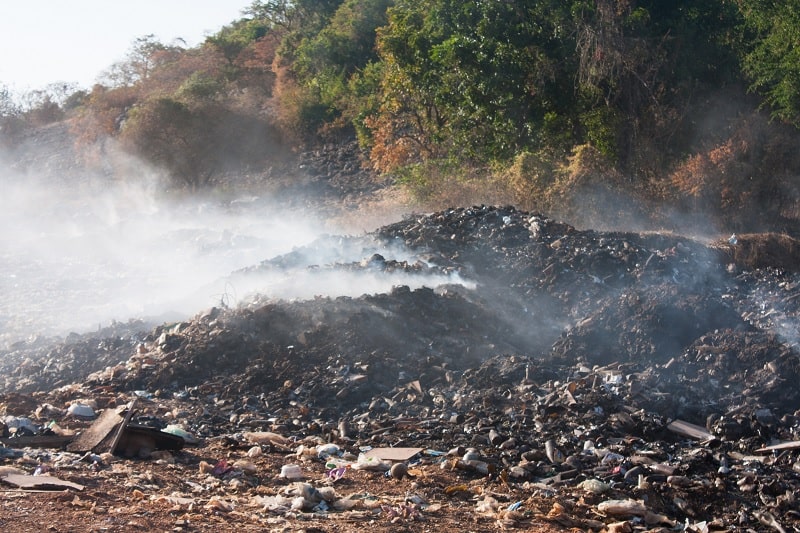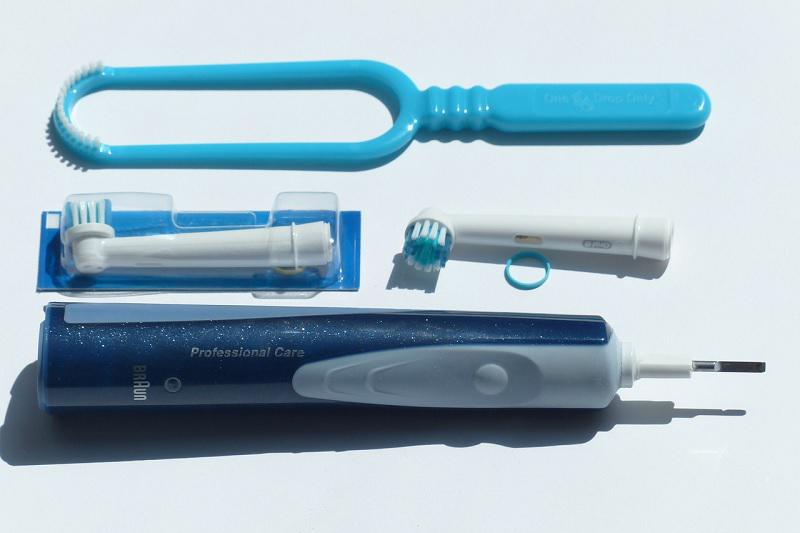Plastic pollution is one of the fastest growing problems on our planet.
Humans have produced huge amounts of plastic over the last 60-70 years, and because plastic is made to be durable and last a long time, it will potentially stay around for hundreds of years eventually ending up in the ground and sea.
The horrific environmental damage caused by the 8 million tonnes of plastic that enters our oceans on a yearly basis has been well publicised, and many of us are also aware of the trillions of plastic items that are entering our landfills.
But it’s not just our land and oceans that are suffering from pollution—plastic is also polluting the air we breathe.
Plastic air pollution may not be as visible as the vast amounts of plastic washed up on our beaches or the huge piles of plastic rubbish dumped in landfill, but it is a huge threat to human health and one we all need to take seriously.
Air pollution is “among the most pervasive environmental threats on human health, accounting for over two-thirds — more than 6 million — of the 9 million deaths linked to all environmental pollution.” (source)
The lifecycle of plastic contributes to air pollution from beginning to end.
Table of Contents
The Production of Plastic
Plastic begins to pollute our air long before it ends up in waterways or landfill sites.
Over 99% of plastic is made from petrochemicals derived from fossil fuels, which increase concentrations of hazardous air pollutants during the extraction process.
Oil and gas drilling can release lots of toxic air contaminants including benzene, carbon monoxide, ethylbenzene, hydrogen sulphide, ozone, particulate matter, sulphur dioxide, toluene, volatile organic compounds and xylene.
The production of plastic can pose huge risks to factory workers and nearby communities.
During the process of refining plastic, toxic resins and additives such as benzene and vinyl hydrochloride are often added, and there are fears that some of these toxic substances may cause health problems and diseases including cancer.
Plastic Air Pollution in Our Homes
Plastic is so versatile, it’s used in hundreds of household products, but these everyday objects can pollute the air we breathe every day.
If you buy a new plastic item for your home, you may be aware of a strange odour the first few times you’ve used it.
Many plastic items in our home are made from PVC (polyvinyl chloride), a type of plastic that contains volatile organic compounds (VOCs) that evaporate into the air at room temperature (known as outgassing).
PVC can also contain phthalates, added to give flexibility, and there are concerns that these chemicals can cause serious health problems including reproductive problems and even some cancers.
What Are Microplastics?
In a recent study, scientists discovered tiny pieces of plastic raining down from a clear sky in the Pyrenees Mountains in Southern France at a “daily rate of 365 microplastic particles per square metre” (source).
Microplastics are tiny pieces of plastic measuring less than five millimetres long (but often much smaller), that come from various sources such as plastic bottles or straws that have broken down into tiny pieces and drift into the air and oceans.
There is already concern about microplastics entering our food chain through fish swallowing these tiny particles in the ocean, and scientists now know that we can breathe in tiny microplastic particles that are in the air through our nose or mouth, with the tiniest particles small enough to pass into our lung tissue.
Worryingly, scientists have found even higher amounts of microplastics inside our homes than outdoors.
Babies and children can be even more vulnerable to the effects of microplastics than adults, breathing in more polluted air due to their more rapid breathing patterns, and also because of their developing respiratory systems.
Does Burning Plastic Pollute the Air?
With so much plastic waste lying around in our lands and oceans, burning unwanted plastic might seem like a perfect solution, but when plastic is heated it can release toxic chemicals such as hydrochloric acid, sulphur dioxide and dioxins into the air, potentially causing respiratory ailments and other illnesses.
Although many companies claim that burning plastic can provide new energy or other materials, incinerator technologies are “prone to failure and ineffective at eliminating plastic pollution” (source).
Summary
Plastic air pollution may not be as visible to us as the damage plastic is doing to our oceans and land, but is still damaging to our planet and to our health.
The best way we can prevent plastic from polluting our air is to try and reduce how much plastic we use in our daily lives.
See our guide to using less plastic for some tips.

Clare began her career as a technical writer, but since having her boys has worked mostly from home writing content for various websites, including health and beauty and educational resource sites.



